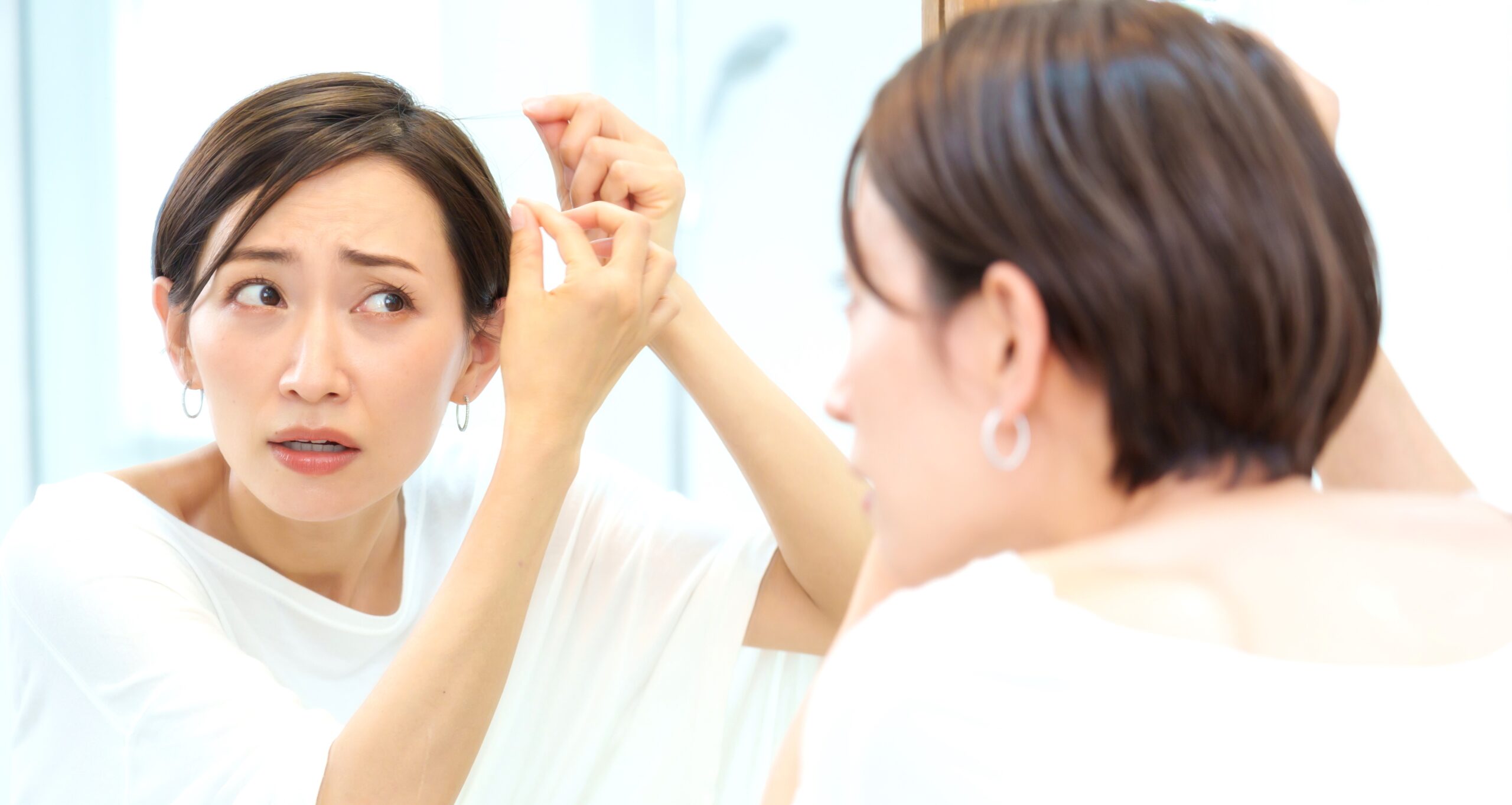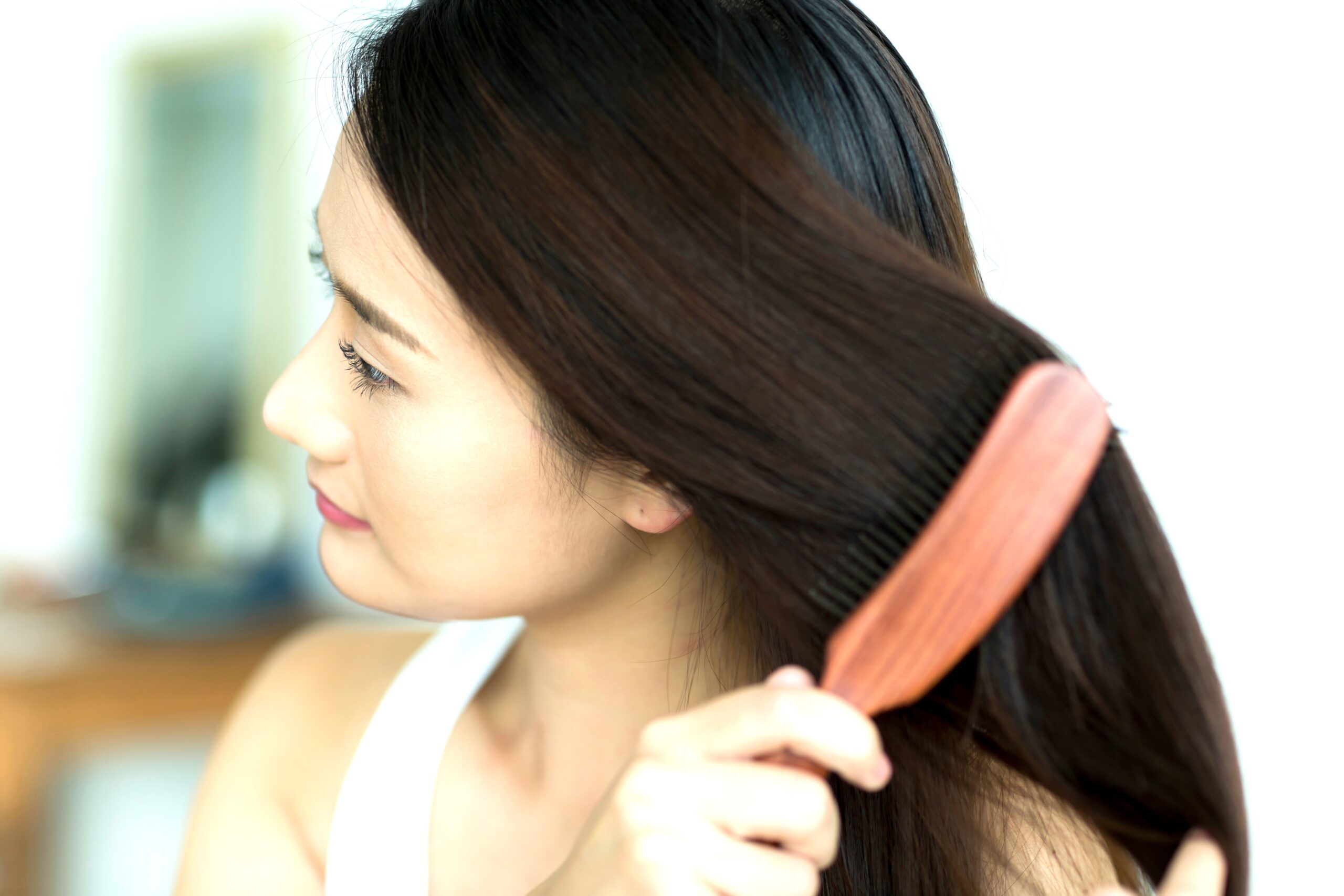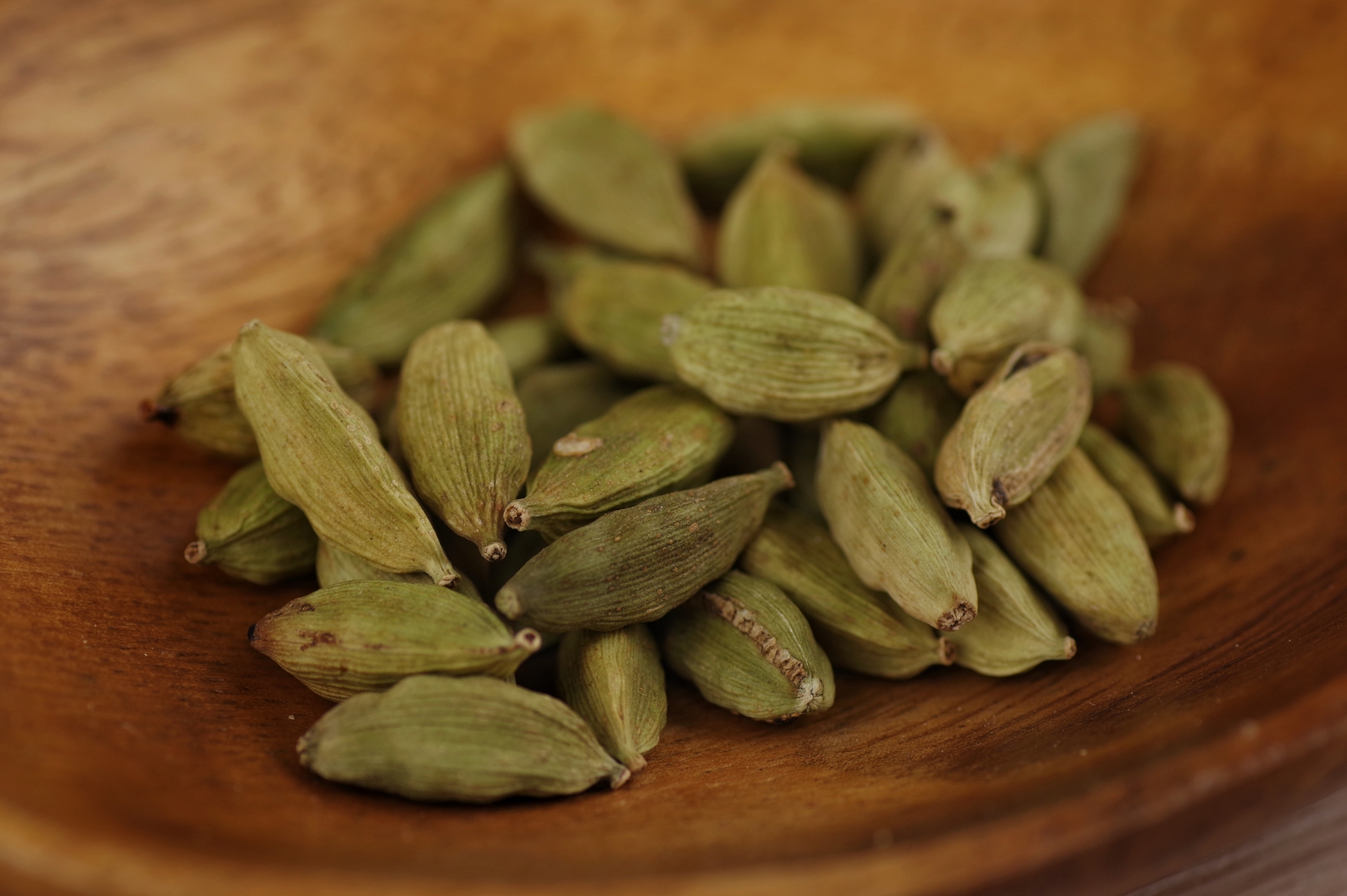~Dr. D&D は、スリランカ人アーユルヴェーダ医師ディネッシュ (Dinesh) 先生とディネッシュカ (Dinushka) 先生による、14年間のウェルネスホスピタリティ業界での幅広い経験を結集したウェルネスブランドです。~
今回は、ヘッドマッサージについてご紹介します!
目次
シロー・アビヤンガ(ヘッドマッサージ)
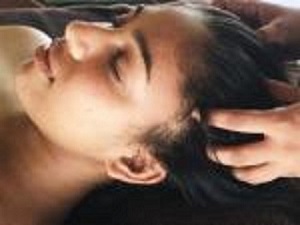
シロー・アビヤンガは、アーユルヴェーダ医学システムの中で最も重要な外部治療の一つです。
シロー・アビヤンガという単語は、シロー(頭)とアビヤンガ(マッサージ)という2つの単語からなるサンスクリット語です。
アーユルヴェーダの古典によると、頭をあつかう様々な治療法がありますが、
シロー・アビヤンガはそのうちの一つです。
シロー・アビヤンガは本質的には、頭・首・肩の完全なマッサージを意味します。
なぜなら、現代医学として、アーユルヴェーダでは、身体のコントロールシステム(操作システム)は頭にあると考えます。それは全身を表し、マルマ(ツボ)を含むいくつかの主要なポイントで構成されています。
アーユルヴェーダの古代科学は、人体を逆さの木と考えます。
根は上部にあり、頭、脳、首として、
幹は胸郭と腹部、
四肢は下向きに尖った枝として考えます。
そのため、根が木に栄養を与えるのと同じように、
頭は「プラーナ(気)」や身体のエネルギーを変換し、調整し、保存することで、
身体と心をコントロールします。
そして、そこはトリ・ドーシャ(ヴァータ、ピッタ、カパ)のための場所です。
アーユルヴェーダでは、シロー・アビヤンガはオイルマッサージ療法(Snehana Karma)のところで説明されています。
そのため、ハーブオイルを塗布することで、この治療法はより有益なものとなります。
オイルの種類と量は、個々の要件に応じて変化します。
シロー・アビヤンガは、アーユルヴェーダの古典にある頭のオイルマッサージ療法の一つです。
シロー・アビヤンガに適する様々なタイプのオイルが、アーユルヴェーダでは記されていますが、体質により最適なオイルは異なります。
セルフマッサージであっても、プロのマッサージを受ける場合でも、どちらでも、適切なヘッドマッサージをすることで、多くの健康効果を得ることができます。
どの体質の方にも、毎日のヘッドマッサージは有益です。
そして、ヘッドマッサージに最適な時間帯はお昼前です。
ヘッドマッサージの注意点
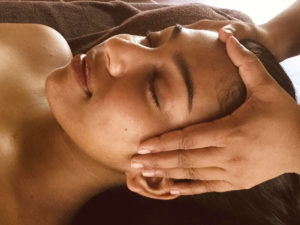
- オイルは室温よりも1~2度以上高くなるよう温めましょう。
- オイルを頭皮につけ、最低でも20分、オイルがついた状態を保ちましょう。
- マッサージ中はエアコン、ファン、寒い場所にさらさないでください。
- 直射日光を避けましょう。
- 頭皮にオイルをつけたまま、眠らないようにしましょう。
- 冷たくて重い食べ物や飲み物は避けましょう。
- アルコールや喫煙は避けましょう。
ヘッドマッサージの効果
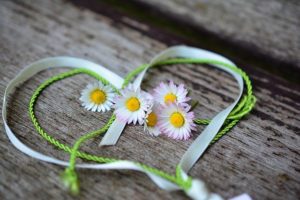
- リラクゼーションを促進します。
- 身体組織の健康を改善し、若返らせます。
- ストレスを軽減します。
- 緊張や不安から解放させます。
- 筋肉をリラックスさせ、コリを軽減します。
- 痛みや頭痛を緩和します。
- 神経系を活性化させます。
- 髪に栄養を与え、髪の成長を促進します。
- 視力、目の屈折異常、眼精疲労を改善します。
- 血圧を下げます。
簡単セルフヘッドマッサージのステップ
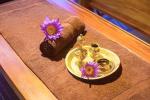
- ゆったりとした座り心地の良い場所に座りましょう。
- 両手のひらをこすり合わせ、手のひらを額に1分間当てます。
- 温かいハーブオイルを指先につけます。
- 指先を前から後ろ、横から横へと髪をとかすように動かします。頭の中心に向かって圧をかけ、3~5回続けましょう。
- 次に、前から後ろ、真ん中から横に向かって円を描くように動かします。これを3~5回続けましょう。
- ステップ4と5を繰り返しましょう。
- 手のひらを頭皮に置き、腕を動かし、頭皮をマッサージします。頭皮に少し圧力をかけるとよいでしょう。これを2~3分ほど続けます。
- 最後に、温かいタオルで頭を覆って20分キープしましょう。
ライタープロフィール
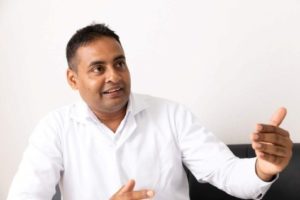 アーユルヴェーダ医師ディネッシュ先生 / Dr. Dinesh Edirisinghe
アーユルヴェーダ医師ディネッシュ先生 / Dr. Dinesh Edirisinghe
スリランカ国立コロンボ大学アーユルヴェーダ・メディスン&サージェリー卒業
脈診と額に手を当てることにより、クライアントの体質はもちろん、現在の病気や体調、過去の病歴までを読み取とることから「ドクターCTスキャン」として有名。特にデンマーク、ドイツ、日本での経験が豊富で、スリランカのジェット・ウィング・グループで、アーユルヴェーダの責任者として活躍し、スリランカの本格的なアーユルヴェーダをスリランカ国外に広めるための新しいコンセプトを構築した。
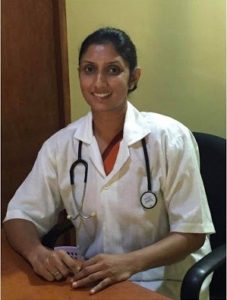 アーユルヴェーダ医師
アーユルヴェーダ医師
ディネッシュカ先生 / Dr. Dinushka Dissanayake
スリランカ国立コロンボ大学アーユルヴェーダ・メディスン&サージェリー卒業
ディネッシュ先生の最愛の奥様であり、婦人科とメンタルヘルスの専門家。
※「ドクターCTスキャン」の異名をもつ有名なディネッシュ先生と奥様のディネッシュカ先生についてさらに詳しいプロフィールはこちら。
ENGLISH
Shiro Abhyanga – Head massage
Shiro abhyanga is one of the most important external treatment in Ayurveda medicine system. The word Shiro Abhyanga is a Sanskrit word comprised with two words and the meaning of Shiro- Head and abhyanga – Massage. According to the Ayurvedic texts there are various treatments were involved head and Shiro Abhyanga is one of that. Shiro Abhyanga essentially means a complete massage of the head, neck, and the shoulders. Because, as the modern medicine, Ayurveda do believe the control system (operational system) of the body is allocated in the head. It represents the whole body and it consists of several prime points, including Marma -life centers.
The ancient science of Ayurveda believes the human body as an inverted tree. Roots are in the top considers as the head, brain, neck, and the trunk consider as the thorax and abdomen. Limbs are considered as the downward pointed branches. So just like roots nourish the tree head controls the body and the mind by converting, regulating, and storing the “Prana” or body energy. And it is the place for Thri dosha Vata, Pitta and Kapha.
In Ayurveda, Shiro Abhyanga is explained under the Snehana Karma (oiling therapy). To that, by applying herbal oil this treatment could be more beneficial. Type of the oil and the amount is varied according to the requirement of an individual. Concerning to that Shiro abhyanga is one of the head oiling therapy, which comes under the Ayurvedic texts.
There are various types of oil have been described in Ayurveda, which suit for Shiro abhyanga. It differs according to the Doshic levels.
By having a proper head massage, you can get lots of health benefits. It can be from your own or from a professional. It’s beneficial to have daily head massages for any body type. And the best time for the head massage is before the noon. The most important points that you want to concern while doing the head massage are;
- Heat the oil 10 -20 degrees more than the room temperature.
- Keep the oil on your scalp at least for 20 minutes.
- Do not expose to air conditioner, fan or to the cold climate during the treatment.
- Avoid heavy sun rays.
- Do not sleep.
- Avoid cold and heavy foods and beverages
- Keep away from alcohol and smoking
Benefits of Shiro abhyanga
- Promote relaxation
- Improves and rejuvenates physical system health.
- Reduce stress
- Release tension.
- Relaxes muscles and reduces stiffness.
- Relief pain and headaches
- Stimulate the nervous system.
- Nourishes the hair and promote the growth of hair.
- Improves vision, eye refraction errors, and eye strain.
- Lowers blood pressure
Steps of a simple self head massage
- Sit in a relaxing and comfortable place.
- Rub your both palms together and place your palms on your forehead for 1 minute.
- Add some warm herbal oil to your finger tips.
- Run your fingertips through your hair from front to back and side to side. Apply downwards pressure and continue for 3 to 5 times.
- Next use circular motions from front to back and middle to the sides. Continue it for 3 to 5 times.
- Repeat the steps 4 and 5.
- Then place your palms on your scalp and move your arm. Give a slight pressure on your scalp. Continue it for 2 to 3 minutes.
- After that cover your head with a warm towel and keep it for 20 minutes.
Author: Dr.D&D (Dr. Dinesh Edirisinghe & Dr. Dinushka Dissanayake) ...see more






